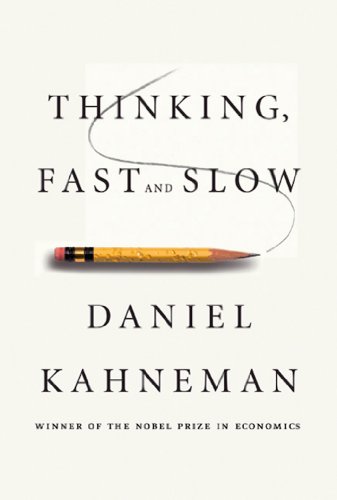

This article is an excerpt from the Shortform summary of "Thinking, Fast and Slow" by Daniel Kahneman. Shortform has the world's best summaries of books you should be reading.
Like this article? Sign up for a free trial here .
What is narrow framing? Does it help or hinder our decision-making process?
Narrow framing is when you focus on the details at the expense of the big picture. Narrow framing can hurt your decision-making skills because it keeps you from seeing your choices in context.
We’ll cover what narrow framing is, how it differs from broad framing, and how to counter narrow framing in your everyday life.
Narrow Framing v. Broad Framing
When you evaluate a decision, you’re prone to focus on the individual decision, rather than the big picture of all decisions of that type. This is called narrow framing. A decision that might make sense in isolation can become very costly when repeated many times.
To see how narrow framing works, consider both decision pairs, then decide what you would choose in each:
Pair 1
- 1) A certain gain of $240.
- 2) 25% chance of gaining $1000 and 75% chance of nothing.
Pair 2
- 3) A certain loss of $750.
- 4) 75% chance of losing $1000 and 25% chance of losing nothing.
As we know already, you likely gravitated to Option 1 and Option 4. If you did, you used narrow framing.
But let’s actually combine those two options, and weigh against the other.
1+4: 75% chance of losing $760 and 25% chance of gaining $240
2+3: 75% chance of losing $750 and 25% chance of gaining $250
Even without calculating these out, 2+3 is clearly superior to 1+4. You have the same chance of losing less money, and the same chance of gaining more money. Yet you didn’t think to combine all unique pairings and combine them with each other!
This is the difference between narrow framing and broad framing. The ideal broad framing is to consider every combination of options to find the optimum. This is obviously more cognitively taxing, so instead you use the narrow heuristic—what is best for each decision at each point?
An analogy here is to focus on the outcome of a single bet (narrow framing), rather than assembling a portfolio of bets (broad framing).
Yet each single decision in isolation can be hampered by probability misestimations and inappropriate risk aversion/seeking. When you repeat this single suboptimal decision over and over, you can rack up large costs over time.
Narrow Framing Examples
Practical examples:
- In a company, individual project leaders can be risk averse when leading their own project, since their compensation is heavily tied to project success. Yet the CEO overlooking all projects may wish that all project leaders take on the maximum appropriate risk, since this maximizes the expected value of the total portfolio.
- Appliance buyers may buy individual appliance insurance, when the broad framing of all historical appliances may show this is clearly unprofitable for individuals.
- A risk-averse defendant who gets peppered with frivolous lawsuits may be tempted to settle each one individually, but in the broad framing, this may be costly compared to the baseline rate at which it would win lawsuits (let alone settling lawsuits invites more lawsuits).
- If given a highly profitable gamble (e.g. 50-50 to lose 1x or gain 1.5x), you may be tempted to reject the gamble once. But you should gladly play 100 times in a row if given the option, for you are almost certain to come out ahead.
- The opposite scenario may also happen: in a company, leaders of individual projects that are failing may be tempted to run an expensive hail-mary, to seek the small chance of a rescue (because of overweighting probabilities at the edges). In the broad framing, the CEO may prefer to shut down projects and redirect resources to the winning projects.
Antidote to Narrow Framing
To overcome narrow framing, adopt risk policies: simple rules to follow in individual situations that give a better broad outcome. Examples:
- Check your stocks only once a quarter. Don’t trade on emotion.
- Always take the highest possible deductible for insurance.
- Never buy extended warranties.
- (Shortform suggestions: treat your time as costing $X per hour. Avoid spending time on activities that are unprofitable at this rate, even if you have a sunk cost.
- Always prioritize projects by return on investment (ROI) or internal rate of return (IRR), not by other confounding reasons.)
- You win a few, you lose a few. Don’t obsess over any individual outcome.
Reversals
Because of a narrow frame, System 1 doesn’t know what information it’s missing. It doesn’t consider the global set of possibilities and make decisions accordingly. This can lead to odd situations where you make one set of decisions when considering two cases individually, then a contradictory decision when you consider them jointly.
Consider a nonprofit that reduces plastic in the ocean to avoid poisoning and killing baby dolphins. How much are you willing to donate to support the cause?
Now consider the discovery that farmers are at significantly higher risk of skin cancer because of the time they spend outdoors. How much are you willing to donate to a nonprofit that reduces cancer for at-risk groups?
You are likely more willing to pay a higher amount for the dolphins than the farmers. In isolation, each scenario engages a different “account” and intensity of feeling. Saving baby dolphins employs the “save the animals” account, and baby dolphins is high on the scale (relative to saving wasps). You intensity match the high emotion you feel to an amount you’re willing to pay.
In contrast, the farmer skin cancer example evokes a “human public health” account, in which farmer skin cancer is likely not as high a priority as baby dolphins is on the saving animals account. Emotion is lower on this account, so the donation is lower.
Now consider the two examples together. You have the option of donating to a dolphin-saving non-profit, or a human cancer-reducing non-profit. Which one are you more willing to pay for? Likely you now realize that humans are more important than animals, and you recalibrate your donations so the second amount exceeds the first.
Judgment and preferences are coherent within categories, but may be incoherent when comparing across categories. This is why narrow framing is dangerous.
And because of the “what you see is all there is” bias, alternative categories may not be available for you to consider. Much of life is a between-subjects trial – we only get exposed to one major event at a time, and we don’t think to compare across instances.
Antidotes to Narrow Framing and Reversals
(Shortform note: the following are our additions and not explicitly described in the book.)
- Reduce all decisions down to a single fungible metric, in the broadest account possible, to allow global calibration.
- Decisions around human life can be assessed in terms of a single metric like Quality-adjusted life years per $. This way, repairing glaucoma can be compared to childhood cancers.
- Projects and investments should be considered in terms of ROI or rate of return, so that all possible spending can be assessed on the same scale from a global account.
- Personal decisions can be considered in terms of happiness per $ or per hour.
- Deliberately consider the broad range of alternatives for scarce resources, such as time, labor, and money. Define the global set of opportunities, rather than focusing on the narrow account.
Use these antidotes to keep from applying narrow framing when making a decision.
———End of Preview———

Like what you just read? Read the rest of the world's best summary of "Thinking, Fast and Slow" at Shortform . Learn the book's critical concepts in 20 minutes or less .
Here's what you'll find in our full Thinking, Fast and Slow summary :
- Why we get easily fooled when we're stressed and preoccupied
- Why we tend to overestimate the likelihood of good things happening (like the lottery)
- How to protect yourself from making bad decisions and from scam artists






